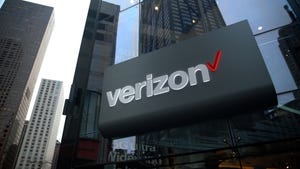Cablevision Battles More Sub Drops
Fifth-biggest US MSO boosts revenue through rate hikes despite losing bunches of subscribers across the board for the second straight quarter.

Still resisting the urge to engage in price wars with Verizon, Cablevision Systems suffered some of its worst subscriber losses ever over the summer months but managed to boost its revenues and earnings nonetheless.
Cablevision Systems Corp. (NYSE: CVC) reported consolidated net revenues of $1.63 billion in the third quarter, up 3.7% on a year-over-year basis and slightly higher than the Wall Street consensus forecast. The company's consolidated adjusted operating cash flow (AOCF) climbed 6.9% to $472 million while its consolidated operating income rose 12% to $252 million, also beating the consensus forecasts.
Cablevision executives credited the financial gains to rate increases, "continued disciplined pricing strategies" and higher advertising revenues. They also credited lower customer service costs as they continue to focus on reducing service problems and cutting the number of "truck rolls" to subscribers' homes. "We're pleased with our progress but our work is not done," said Cablevision CEO James Dolan on the company's earnings call Thursday morning.
But, while Cablevision's financial numbers for the third quarter look healthy, its subscriber numbers do not. The company, which is the fifth-largest US MSO with more than 3.1 million total cable customers in the New York metro area, shed subscribers across the board for the second straight quarter, losing 56,000 video, 33,000 voice and 23,000 broadband subs, respectively. As a result, its overall number of customer relationships fell by 36,000 as Verizon Communications Inc. (NYSE: VZ) maintained its relentless assault on the cable operator's market with its family of fiber-fed FiOS services.
Notably, all these losses were higher than Cablevision suffered in the second quarter, which is usually the worst of the year for cable operators because of seasonal moves by subscribers. They were also higher than Wall Street expected and worse than what the company experienced in the summer of 2013.
Perhaps worse yet, Cablevision, unlike most of its major US MSO peers, lost broadband subscribers for the second straight quarter even though it and other cable operators view broadband as the industry's brightest star right now. Due to these declines, Cablevision actually closed out September with 18,000 fewer high-speed data subs than it had a year ago, raising red flags for analysts concerned about its growth prospects.
"Remember, this [broadband] is the growth engine of the business," wrote Craig Moffett, a principal in MoffettNathnson Research, in a critical note to clients earlier today. "If anyone thought last quarter's dip into YoY [year-over-year] decline was a seasonal anomaly, think again."
Want to know more about pay-TV subscriber trends? Check out our dedicated video services content channel here on Light Reading.
On the earnings call, Cablevision officials defended their subscriber performance, arguing that they are deliberately letting customers with bad debt records and poor credit leave for Verizon's clutches. Instead of trying to lure those consumers back with discounted price offers and other sweeteners, officials said, they are tightening up credit policies and cracking down on delinquent subs.
"We no longer invite subscribers who have a tradition of non-payment," said Cablevision COO Kristin Dolan, who is married to her boss. "We don't want to invite people into the store if they're going to shoplift."
Going on the offensive against Verizon, an angry James Dolan accused his company's chief rival of pumping up FiOS' subscriber totals and market share in the New York area at the expense of all else. "Verizon continues on the path of pursuing destruction of their own capital," he declared. "We don't believe they are profitable on any level in our service area. They just rabidly pursue us in an attempt to get customers. And we're giving them all the customers who are the most expensive customers."
Despite their slumping broadband subscriber numbers, Cablevision executives said they remain tightly focused on boosting broadband as their prime business. In the third quarter, the company introduced two new tiers for its high-speed data service, including a new, low-priced Internet Basic product designed for low-income consumers, older people and light Internet users. (See Cablevision Looks to Data as Great Savior.)
Further, Cablevision officials boasted about their performance on the WiFi front, where they have already deployed more than 1 million hotspots in the New York area and seen customer usage figures soar. Like Comcast Corp. (Nasdaq: CMCSA, CMCSK), Cablevision is now busily installing powerful dual-signal wireless data gateways in every broadband subscriber's home, potentially turning each home into a public hotspot.
"We think it can go much deeper than 1 million," James Dolan said. "Our ultimate goal is to have WiFi available everywhere."
As he has on recent several earnings calls, Dolan strongly hinted that Cablevision will soon unveil ways to monetize its huge investment in WiFi. While he still declined to offer details, he indicated that the company will likely focus not on direct usage fees but on "getting customers to recognize the value" of WiFi service.
"That [monetization] is the trick of it, isn't it?" he said, promising to reveal more on the company's next earnings call. "We have some plans for 2015. We are very focused on that space."
— Alan Breznick, Cable/Video Practice Leader, Light Reading
About the Author(s)
You May Also Like












